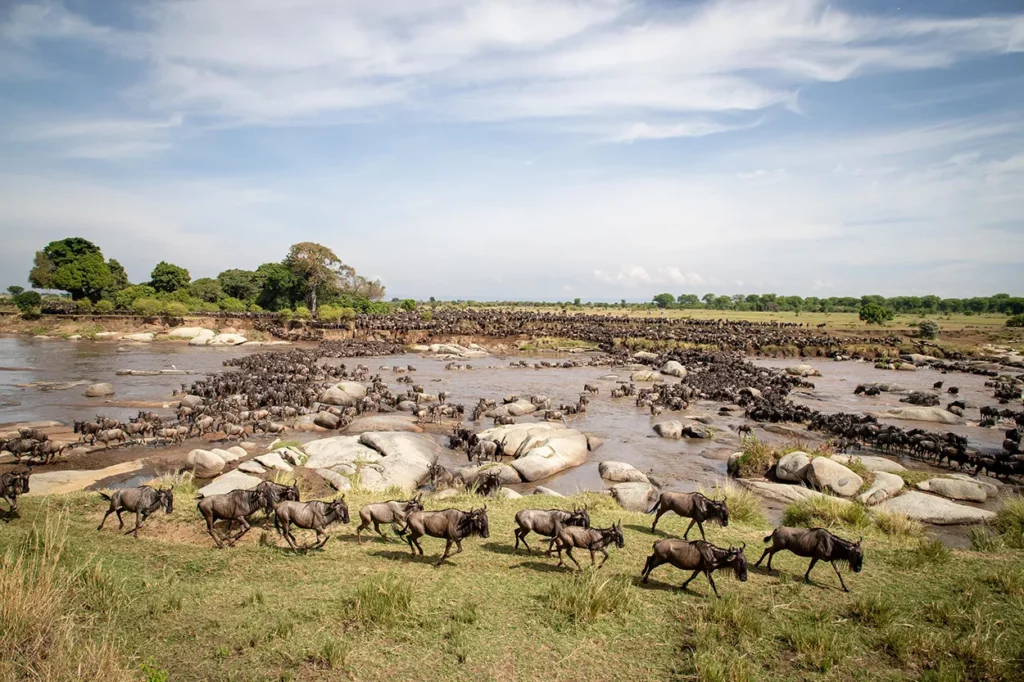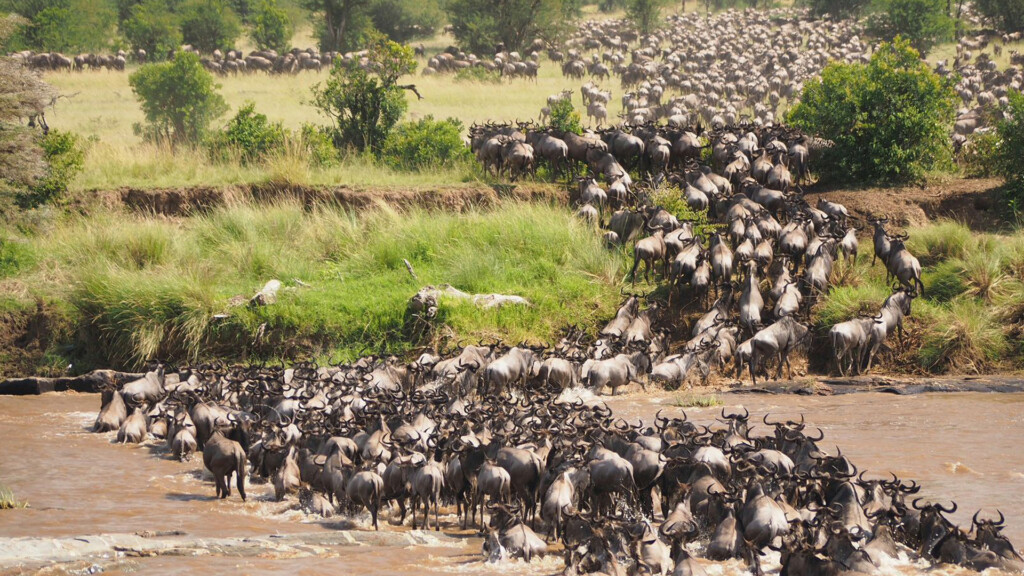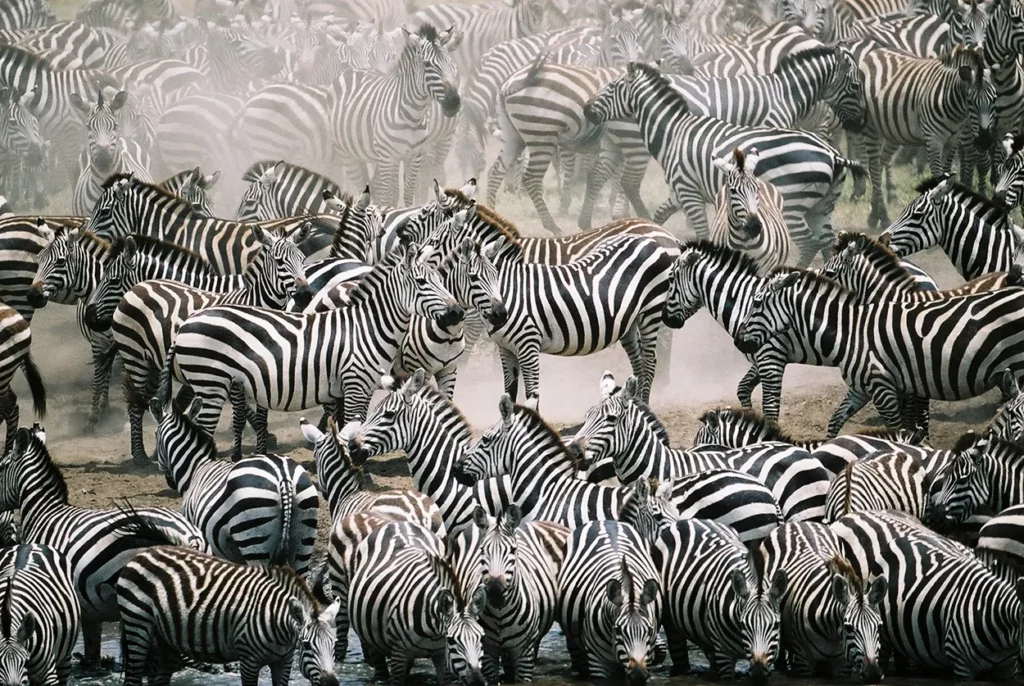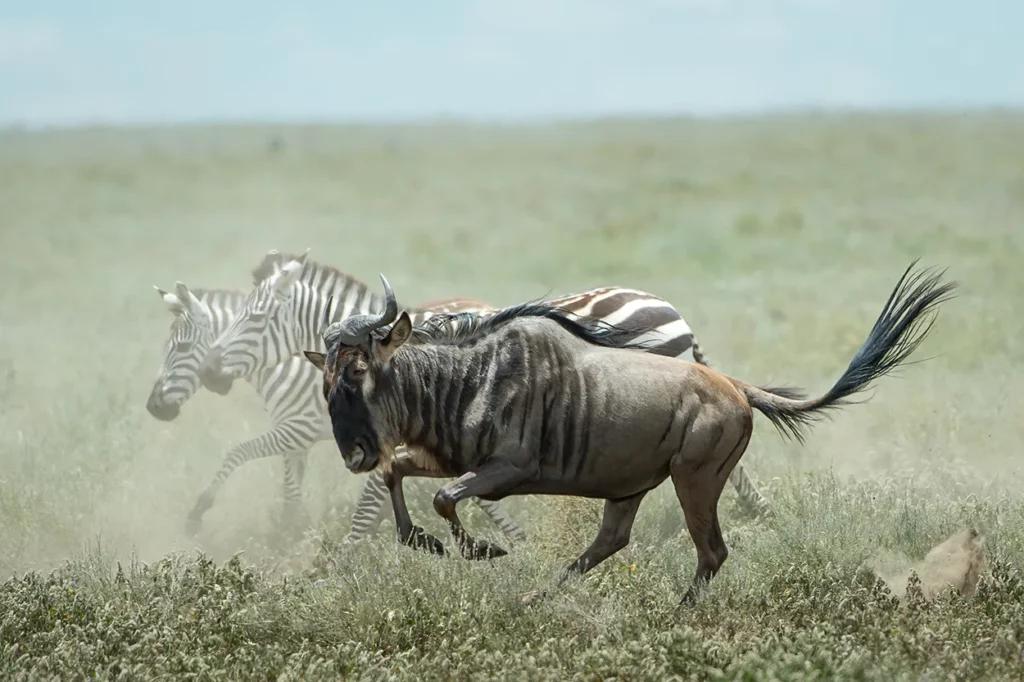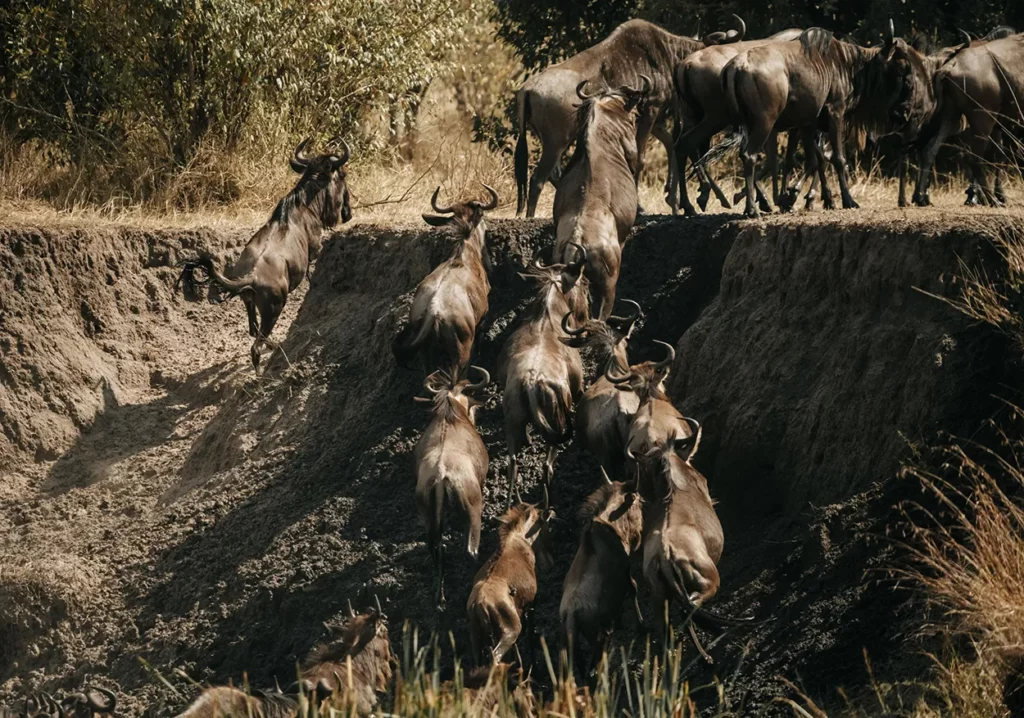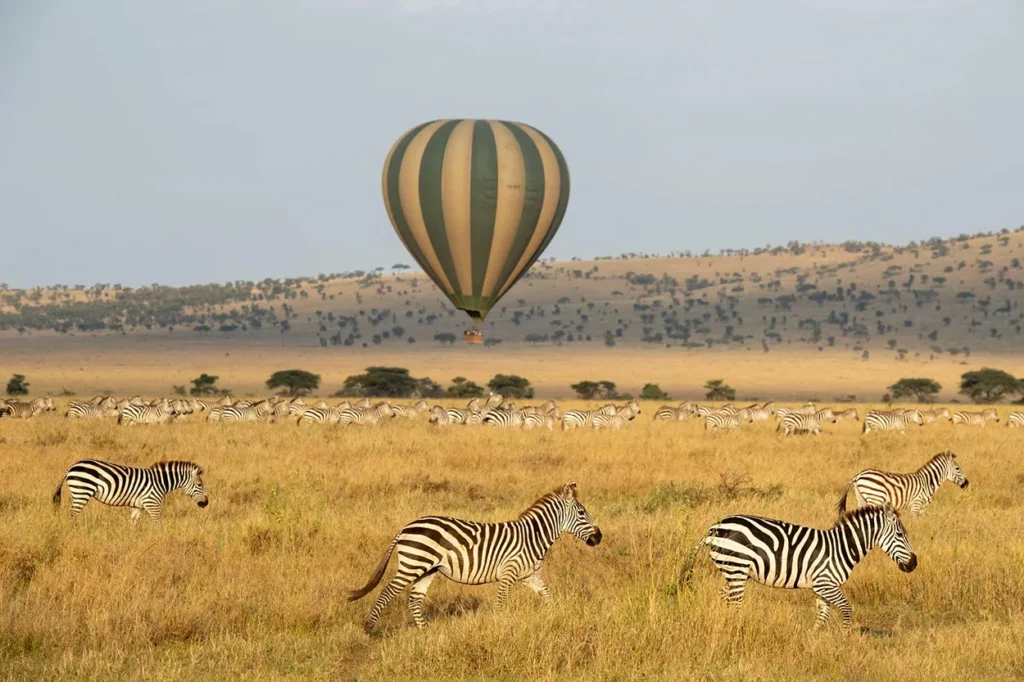Countless documentaries have made this migration one of the most well-known nature phenomena in the world, awarding it the modest strapline’ the greatest show on Earth.’
Throughout the year, more than a million wildebeest – plus hundreds of thousands of zebra and gazelle hangers-on – follow the rains in a clockwise circuit through the Serengeti and the Maasai Mara of Kenya. Astonishingly, the herd is so big it can be seen from space.
The “lion’s share” of the migration occurs in Tanzania’s Serengeti, and you can see the herds at any time, from the river crossings to the calving season.
River crossing
The drama-riddled river crossings that happen between July and September are the most famous time of the migration.
Streams of wildebeest stampede across the river in a riot of grunting and splashing, with great plumes of dust as they gallop down the banks, while crocodiles pick off the vulnerable. It’s an edge-of-your-seat struggle for survival that’s not for everyone. (Many visitors don’t realise that crossings themselves can be an assault on the senses, are gory, and are not for sensitive viewers.) The herds typically gather on the bank, sometimes for days, until one makes the first move. Waiting for a river crossing can be a lesson in patience, and it’s never guaranteed. But there is more to see if you venture out of the action (and away from the crowds). The Serengeti is vast, and anything can happen anywhere when you least expect it.
Stay longer, see more.
To help you see the crossing, we recommend at least six nights across two mobile migration camps, which move seasonally with the herds. During September month, we suggest combining Kenya’s Maasai Mara with the Serengeti.
Best months for migration
The migration route has remained the same for years, but the timing is not guaranteed; it depends on rainfall patterns.
In February, after the ‘short rains’ of November and December, wildebeest give birth on the green plains of the southern Serengeti. This is known as calving season. Watch as many as 8,000 wildebeest babies are born daily—opportunistic predators lie in wait, lions and hyenas prowl the edges, knowing defenceless calves make for easy picking. It’s an experience just as impressive as the river crossing.
April and May are the rutting seasons, but also the rainy season. Monsoon rain that lasts all day forces many camps to close during these months.
By June, depending on rainfall, the herds can be found in the western corridor, and from here, it’s possible to see them crossing the Grumeti River.
If rain is plentiful, they linger around central Serengeti – a natural hangout for big cats.
While the migration occurs throughout the year, not all months are created equal; given the choice, we recommend February – it’s also busy, but it’s possible to escape the crowds as the wildebeest is spread out over a large area. June is also a highlight, where we recommend a combo of Western and Central Serengeti. And, of course, the peak season months of July, August and September in the northern Serengeti. And for peak season, we start planning at least a year out.
Migration nerds
We have access to daily updates from tourists and guides on the ground and through live migration maps, which also show the proximity of lodges to the herds – this is helpful for last-minute bookings.
We use a prediction model for peak season based on historical data,weather forecasts and sightings trends.
Although seeing a river crossing is never guaranteed, we can remove some guesswork with a bit of luck, lots of experience, and some intelligent science.
Of course, seeing calves born in February is easier to guarantee – but regardless, you will see great herds and maybe even a hunt. (guaranteed to happen on the day you leave your camera in camp)
Good guides
Experienced, responsible guides know how to find their own sightings and avoid the crowds, relying less on the radio that alerts dozens of guides and drivers to a pride of lions with cubs or a serval wandering along one of the main park tracks.
Fortunately, we know the camps with the most exacting standards. (And not just for guiding. G&T making is high on our checklist – a generous free-pour gets extra points.)
While the rest of the Serengeti zooms off to look at a sleeping leopard, you could be watching a cheetah mother stashing her fuzzy cubs in a bush. Or join a clan of spotted hyenas at their den site – despite their unfair inclusion in the ‘Ugly Five’ (so mean), hyena cubs are ridiculously cute.


